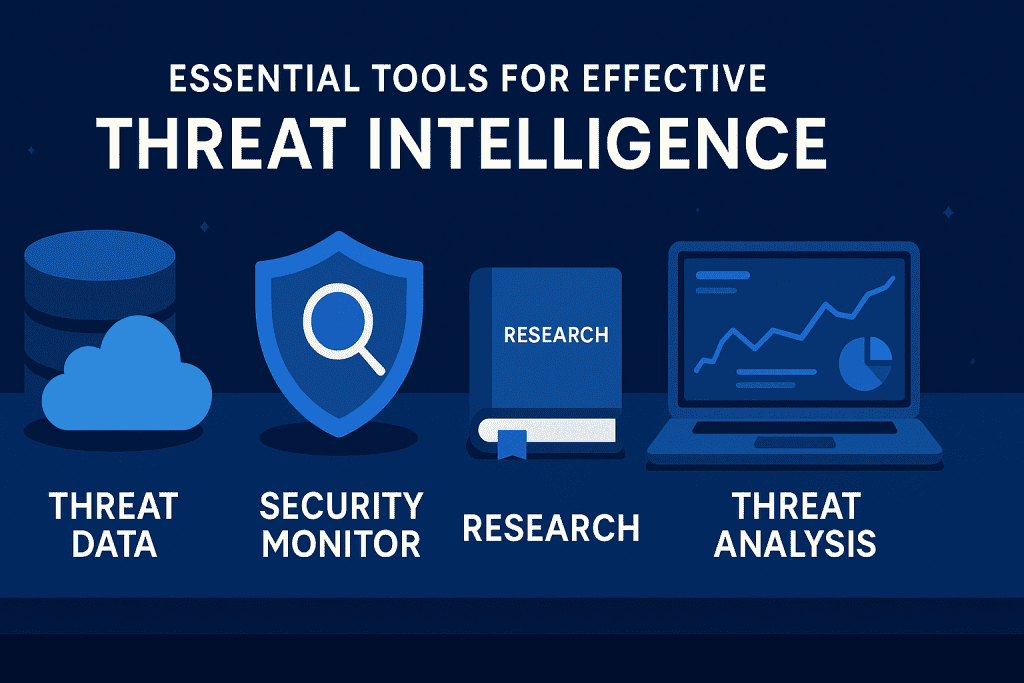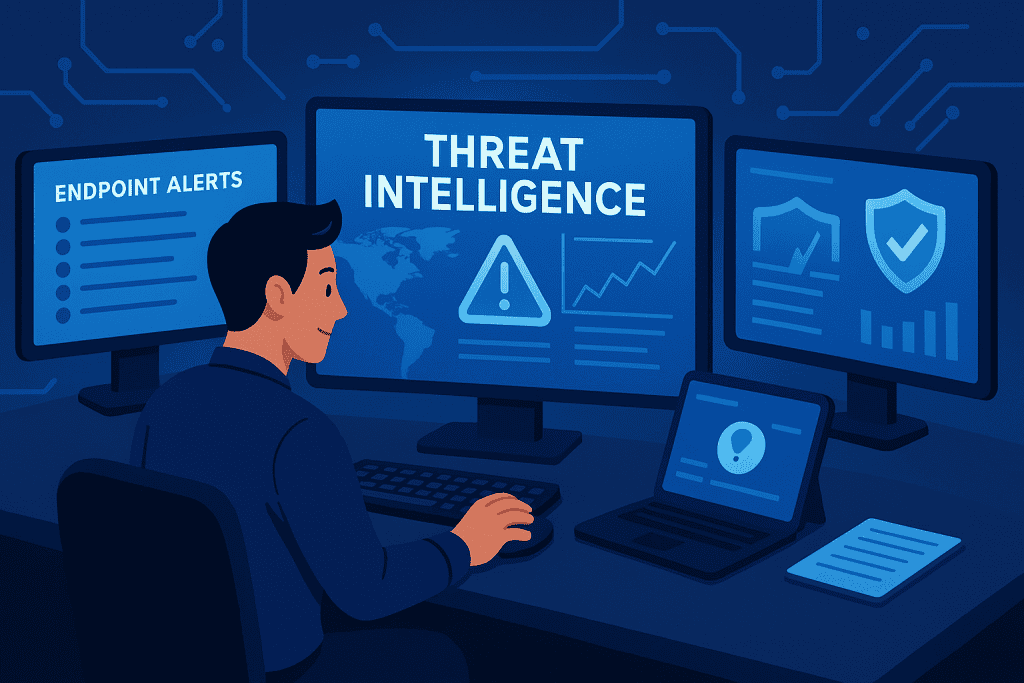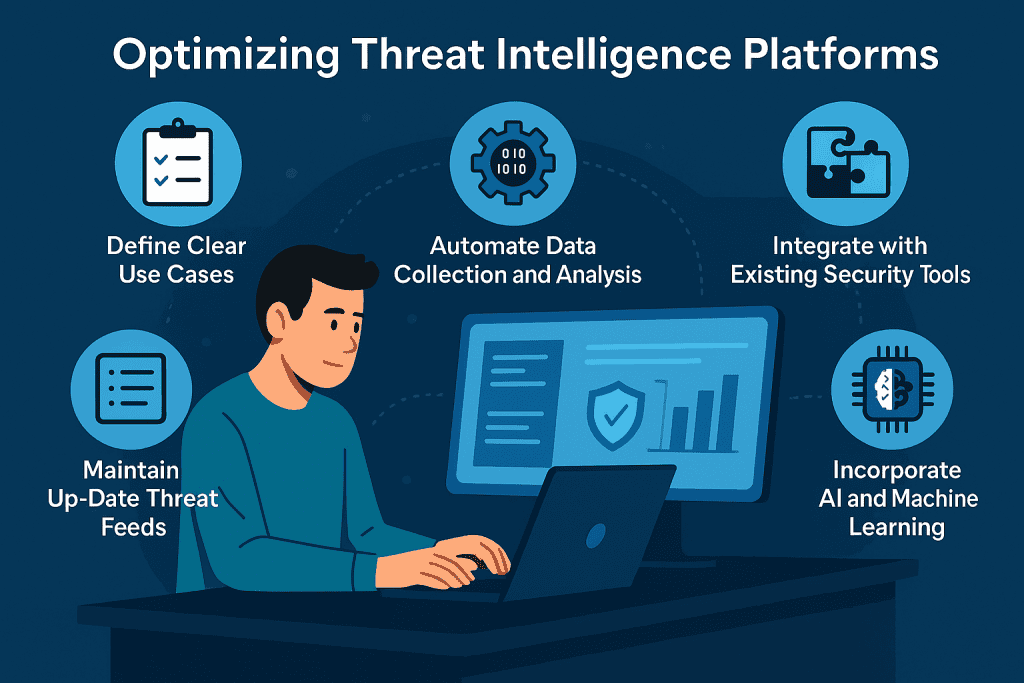Threat intelligence is more than just a buzzword—it’s the backbone of modern cybersecurity strategies. It empowers organizations to anticipate, identify, and neutralize cyber threats before they can cause damage. Whether you’re a cybersecurity professional or someone exploring ways to strengthen your organization’s defenses, understanding how to leverage this platforms is essential. This guide will walk you through the process, tools, and best practices for using threat intelligence platforms to stay ahead of evolving threats.
Tools Needed for Threat Intelligence

To successfully implement this, you’ll need specific tools and resources. Here’s what to have on hand:
| Materials/Tools | Purpose |
|---|---|
| Threat Intelligence Platform | Aggregates and analyzes threat data. |
| OSINT Sources | Open-source intelligence for broader insights. |
| Incident Logs | Tracks and analyzes previous suspicious activity. |
| Skilled Team or Analyst | Processes and interprets complex data. |
| Threat Models | Frameworks to predict and address risks. |
These tools form the foundation for effective this operations. With them, you’ll be equipped to handle a variety of cybersecurity challenges.
Threat Intelligence Step-by-Step

Using a threat intelligence platform effectively involves a structured process. From setting clear objectives to implementing proactive measures, each step builds on the last to create a strong defense against cyber threats. Follow these detailed steps to make the most of your platform and enhance your organization’s security posture.
Step 1: Define Clear Objectives
Start by identifying what you aim to achieve with a threat intelligence platform. Are you focusing on protecting customer data, monitoring specific types of threats like ransomware, or gaining insight into industry-specific risks? Establishing clear goals sets the stage for the entire process, ensuring that the platform aligns with your organization’s unique needs.
For example, if your organization frequently deals with phishing attempts, your objective might be to identify patterns and block malicious email domains. Having clear, measurable goals will guide your team’s focus and make the process more efficient.
Step 2: Gather and Aggregate Data
Data is the lifeblood of threat intelligence. Begin by pulling information from both internal and external sources. Internal data includes system logs, employee reports, and past incident records, which provide valuable context about your organization’s specific vulnerabilities.
External sources, such as OSINT (Open Source Intelligence), industry threat feeds, and government advisories, offer a broader perspective on global and sector-specific cyber threats. For instance, monitoring OSINT might reveal a new vulnerability being actively exploited in your industry.
Using your platform, aggregate these diverse data streams into one centralized location. This consolidation allows for better organization, reduces duplication, and makes the analysis phase more manageable.
Step 3: Analyze Threat Intelligence Data
Once the data is collected, the next step is to process and analyze it to extract actionable insights. This platforms are equipped with tools to visualize and interpret this data, helping to detect anomalies, trends, and threats.
For example, suppose your platform flags an unusually high volume of login attempts from an unfamiliar region. This could indicate a brute-force attack. With advanced tools, such as machine learning algorithms, platforms can prioritize these threats, allowing your team to respond more effectively.
Collaboration is critical at this stage. Analysts, IT staff, and incident response teams should work together to interpret the data and determine the best course of action. The human element is essential for catching nuances and context that automated systems might miss.
Step 4: Disseminate Insights Across Teams
This is most valuable when shared with the right people. Set up regular communication channels to disseminate findings and align responses. This can include weekly threat council meetings, email updates, or dedicated dashboard access for key stakeholders.
For example, if your team detects a phishing campaign targeting executives, you might quickly share an alert with the leadership team, along with guidance on avoiding suspicious emails. Sharing insights across teams ensures everyone is informed and ready to act.
Additionally, ensure that the intelligence you share is actionable and relevant. Overloading teams with excessive or irrelevant data can lead to confusion and inaction.
Step 5: Implement Proactive Measures
Finally, translate your insights into concrete actions to protect your organization. Proactive measures could include:
- Updating firewalls and security protocols: Block flagged IP addresses and domains.
- Enhancing employee awareness: Conduct targeted training sessions for staff to recognize phishing emails or other threats.
- Deploying patches: Address software vulnerabilities discovered during the analysis phase.
For instance, if a report highlights vulnerabilities in commonly used third-party software, your team should prioritize patching those systems. Being proactive ensures that you stay one step ahead of cybercriminals, reducing the likelihood of an incident.
Threat Intelligence Tips and Warnings

Maximizing the effectiveness of threat intelligence platforms requires thoughtful planning and awareness of potential pitfalls. These tips will help you streamline operations, while the warnings ensure you avoid common mistakes that could undermine your efforts. Stay vigilant, adaptable, and proactive for the best results.
| Tips for Success | Warnings |
|---|---|
| Automate Where Possible – Use automated alerts to reduce manual workload. | Avoid Overreliance on Automation – Machines can miss context that a human intelligence analyst can catch. |
| Focus on High-Risk Areas – Prioritize assets and processes most likely to be targeted. | Be Aware of False Positives – Refine filters to avoid being overwhelmed by benign alerts. |
| Stay Updated on Emerging Threats – Keep up with trends like deepfakes and AI-driven cyber threats. | Don’t Overlook Employee Training – Even the best platforms can’t fix human errors without proper training. |
Conclusion
Threat intelligence platforms are indispensable tools in the modern cybersecurity arsenal. By following the steps outlined in this guide, organizations can harness these platforms to detect threats, share actionable insights, and implement proactive security measures. With cyber threats evolving daily, investing in robust this processes is not just an option—it’s a necessity. Start using these tools today and stay ahead of malicious actors.
FAQ
What is a threat intelligence platform, and why is it important?
This platform is a tool that aggregates, analyzes, and shares data about cybersecurity threats. Its primary importance lies in its ability to help organizations identify and mitigate risks proactively, such as ransomware, phishing, or deepfakes.
How does threat intelligence protect against hacking?
Threat intelligence identifies indicators of compromise (IOCs), such as unusual login patterns or suspicious file downloads. By acting on these insights quickly, organizations can block malicious activities before they escalate.
Do I need advanced technical knowledge to use a threat intelligence platform?
While technical skills help, modern platforms are designed to be user-friendly. Teams with diverse expertise, including a trained intelligence analyst, can maximize the platform’s potential through collaboration.
Resources
- BlueVoyant. Threat Intelligence: Complete Guide to Process and Technology.
- DataGuard. Use Cyber Threat Intelligence Platforms to Strengthen Your Cyber Defense.
- BlueVoyant. Threat Intelligence Tools: Types, Benefits, and Best Practices.
- YouTube. How to Use Threat Intelligence Platforms.
- LinkedIn. How to Use Threat Intelligence to Bolster Your Defenses.
